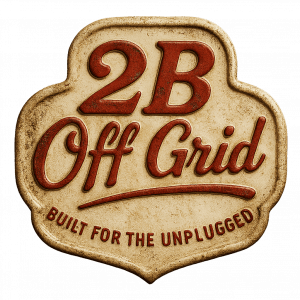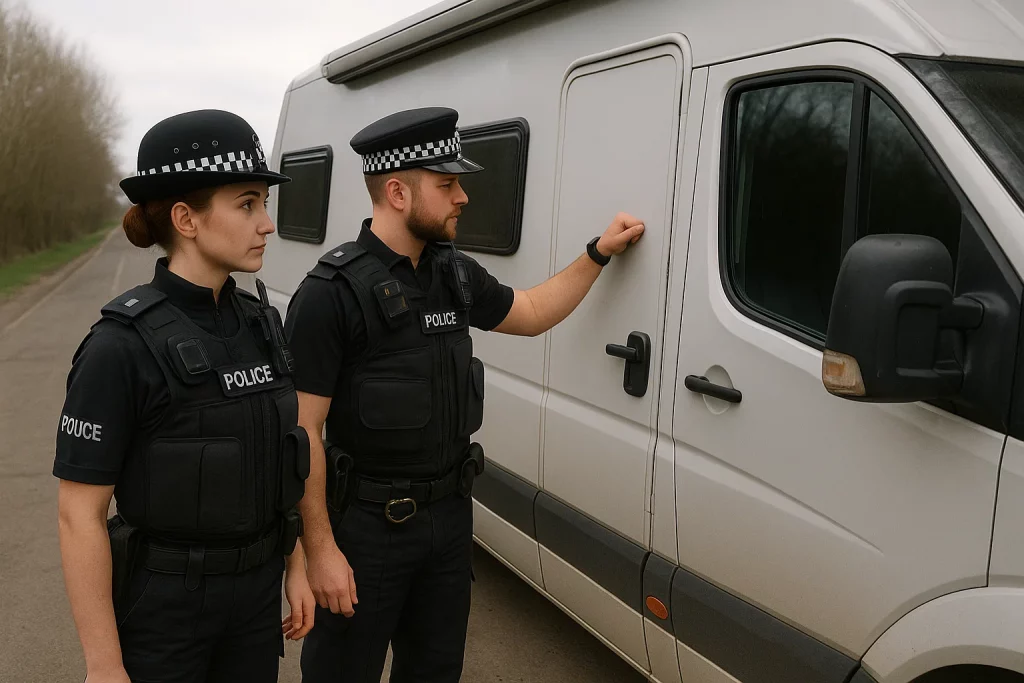It’s 10:30 p.m., and I’m parked in a quiet lay-by near the moors. Just me, my van, and the ticking of my trusted diesel heater. Then I hear it: the soft roll of tyres, headlights sweeping across the tarmac. Another van pulls in, then another…
Suddenly, my “secret” spot, tucked away from the road, is filling up faster than I expected. I glance at my phone. Yep — Park4Night has marked this place, rated five stars. Within hours, strangers have followed the pin right to me.
This is the paradox of vanlife apps: lifesavers and troublemakers in equal measure.
The Upside: Apps That Actually Help Vanlifers
Apps like Park4Night, Search for Sites, the Vanlife Bibles have made finding overnight stops easier than ever. But there’s a subtle divide here.
Many full-time vanlifers have already built up their own mental map of ‘good’ and ‘not-so-good’ spots — knowledge earned through trial, error, and the occasional awkward conversation with a landowner.
We’ll still dip into the apps when travelling out of our comfort zones, but for the casual weekenders or short-term off-grid adventurers, these apps are the go-to from day one.
That’s part of the reason hotspots can suddenly swell overnight — the location pin gets dropped, and by the next weekend, it’s not just you and a quiet view anymore.
For newcomers, especially, they’re a lifeline:
Safety in numbers:
Knowing other vans are nearby can ease the anxiety of parking alone in a dark lane.
Time-saving:
No more endless driving around at night, hoping for a spot.
Community insight:
Tips on water points, bins, quiet hours, or local pubs can make a big difference.
I’ve relied on these apps countless times — a last-minute stop, a safe pull-in somewhere. Without them, it would have been stressful, possibly unsafe.
The Downside: Turning Quiet Spots Into Crowds
Here’s where it gets tricky. That same quiet lay-by I mentioned? By morning, it could have a line of 8–10 vans, all following the app’s directions. Word spreads online, and suddenly what was peaceful becomes a problem.
Councils respond the same way they always have: complaints come in from locals, signs go up, and tolerance disappears.
Apps accelerate exposure. One or two vans might have been fine. Ten? Twenty? That’s when councils start enforcing rules, sometimes with no warning.
Safety in Numbers – Blessing or Curse?
I’ve parked alone many nights and felt exposed. Seeing a few vans nearby provides a sense of security. But the same advantage can backfire — more vans draw attention, and before you know it, the quiet spot you relied on becomes a target for enforcement.
It’s a delicate balance. Apps make it easier to find spots, but also easier to “burn” them.
Apps Don’t Cause the Problem Alone
Let’s be clear: apps themselves aren’t to blame. They don’t litter, block roads, or leave waste. People do.
The real problem is a combination of:
Popularity of vanlife
Seasonal influxes
Overexposure of secret spots online
It’s human behaviour, not technology, that drives restrictions.
Learning from Others: Respect in Action
Take a note from Romani (Romanichal) travellers. For hundreds of years, they’ve parked horse-drawn vardos along verges and grassed areas, stopping only briefly to feed the horses. They leave no litter, carefully manage waste, and locals respect their culture.
Councils and bin men know they’ll move on soon, and they trust their behaviour. That respect earns them tolerance.
Vanlifers could learn from this model: if we leave no trace, stay discreet, and respect the environment, councils are far more likely to tolerate us.
Self-Policing vs. Open Access
There’s an ongoing debate in the vanlife community: should certain spots be kept off apps to prevent overuse?
Some argue yes — protect the gems. Others argue that information should be free, part of the open ethos of travel.
Ignoring the issue isn’t an option. If vanlifers don’t self-manage, councils will manage for us — usually with blunt tools: more signs, fines, and zero-tolerance enforcement.
Tips for Responsible App Use
Rotate locations – don’t return to the same popular lay-by every week.
Leave no trace – rubbish, grey water, even small scraps of food can cause complaints.
Be discreet – chairs, awnings, and BBQs attract attention.
Avoid social media overexposure – photos of secret spots accelerate the rush.
Following these simple guidelines protects both the lifestyle and the quiet spots we love.
The Future: Aires and Legal Alternatives
Some councils have trialled aires: low-cost, time-limited overnight stops with bins, water, and basic facilities. The idea is to provide safe alternatives and reduce the pressure on lay-bys and roadsides.
Challenges include cost, maintenance, and council responsibility for safety and waste. But they demonstrate that structured solutions can work — if vanlifers respect them and the wider community sees value.
Reflections on Vanlife and Apps
Apps are tools, not the enemy. They help with planning, safety, and convenience. But the spots we cherish survive only if vanlifers behave responsibly.
One careless van, one loud night, one unemptied bin — and a once-loved lay-by can vanish under enforcement. Conversely, thoughtful behaviour keeps tolerance alive.
If the community embraces respect, discretion, and awareness, apps become allies rather than culprits, and the UK vanlife scene remains vibrant.
Takeaway
Apps have changed the game, for better or worse. They make travel easier, safer, and more connected, but they also accelerate exposure of quiet spots. The solution isn’t banning apps — it’s vanlifers taking responsibility: leaving no trace, staying discreet, and showing respect for the places we visit.
That combination of technology and responsibility can ensure the freedom of vanlife survives — quietly, sustainably, and for everyone who chooses to live on the road.
I know this is a bit controversial, but one last piece of advice from experience: if you pull up to a spot and see 3–4 vans already settled, seriously think twice about staying. Do you really want to be in that crowded lay-by with the possibility of a knock on the door?
But it’s my local!
if it’s your usual patch, don’t worry — once the initial rush dies down and the newness wears off, those spots often free up again for long-term vanlifers. What goes around, comes around; it’s not all doom and gloom.
Believe it or not, local “flatties” and wardens remember you. If you’re a regular, cause no trouble, are friendly to passers-by, and respect your spots, you’ll earn their respect in return — just like our Romani friends.
I’ve been in that situation myself, and the only knock I ever got was a duty-of-care check to see if I was alright.
Patience, perspective, and respect go a long way in keeping the freedom of vanlife alive.



Martin
19 August 2025 at 10:24What’s your thoughts? is it too late? Has vanlife gone in the UK or is it there still tucked away in a lay-by somewhere?
Campbell
4 September 2025 at 22:362 vans in dornie 2 days ago shutting in public place we caught one of them and made them pick it up it’s shocking public toilets less than 500 mtrs away and you wonder why no one locally likes camoervans
Trouble at mill
13 September 2025 at 16:39Very sad that this goes on in our community, I’m glad you pulled them up, name and shame that’s what Isay